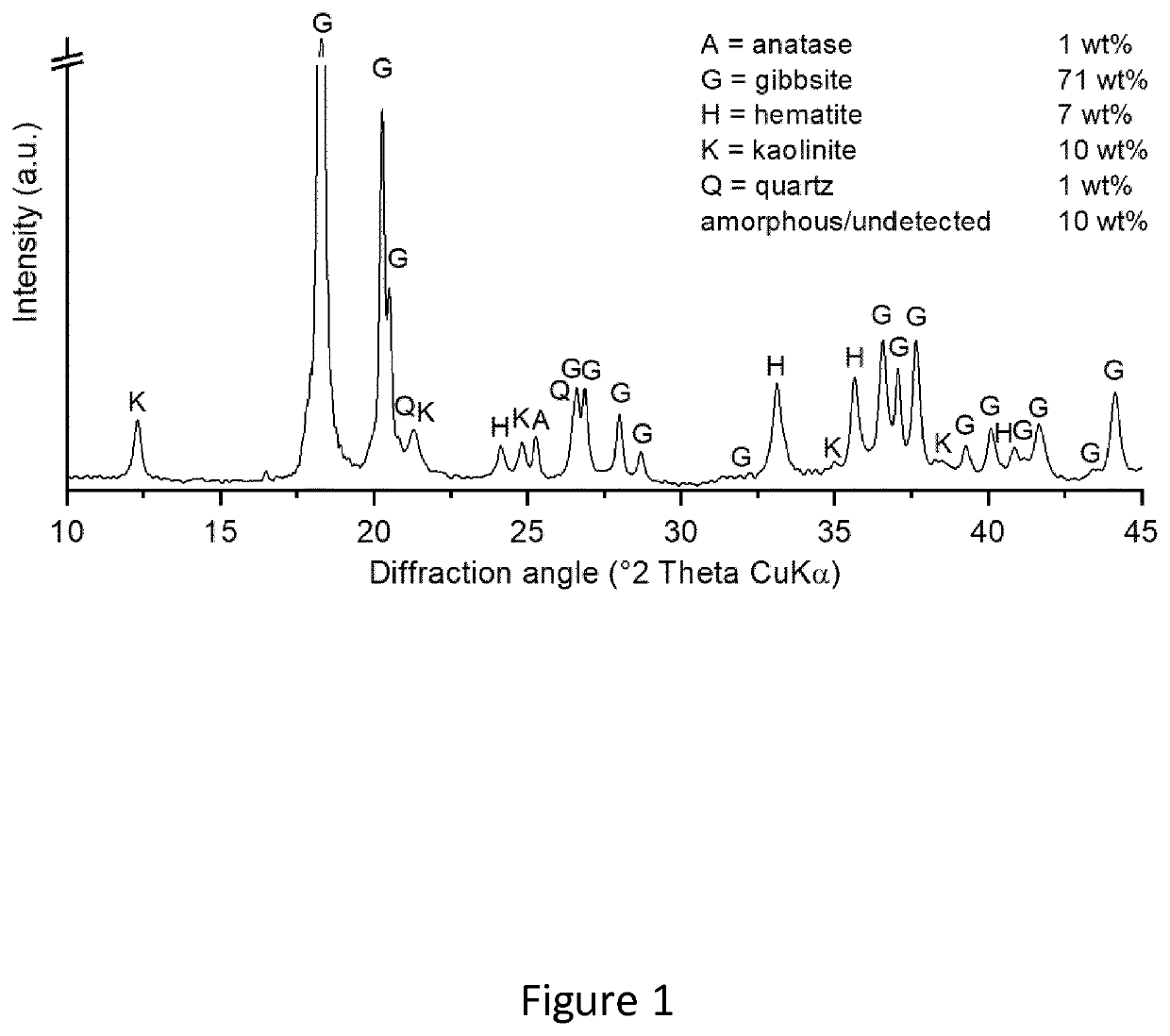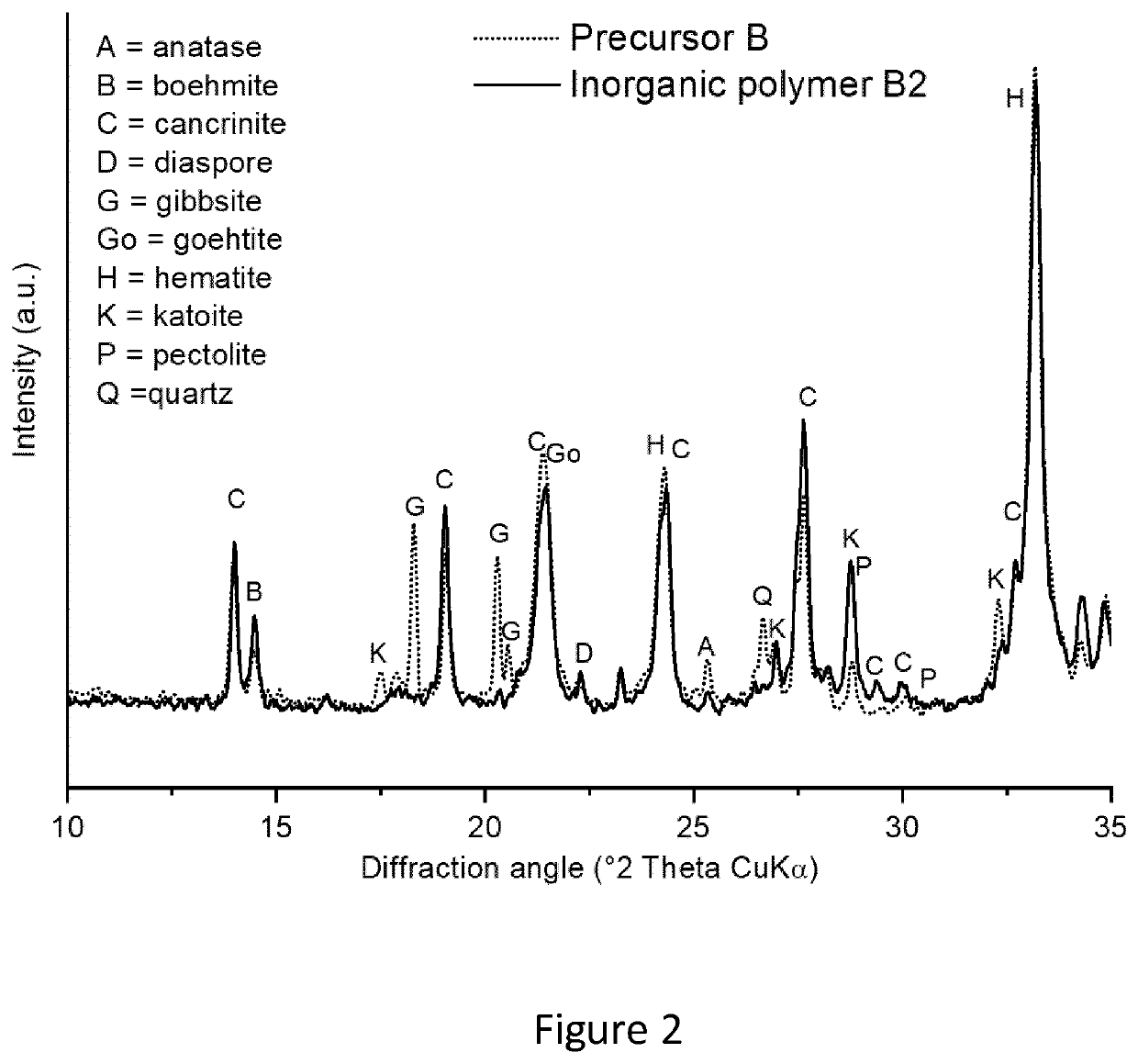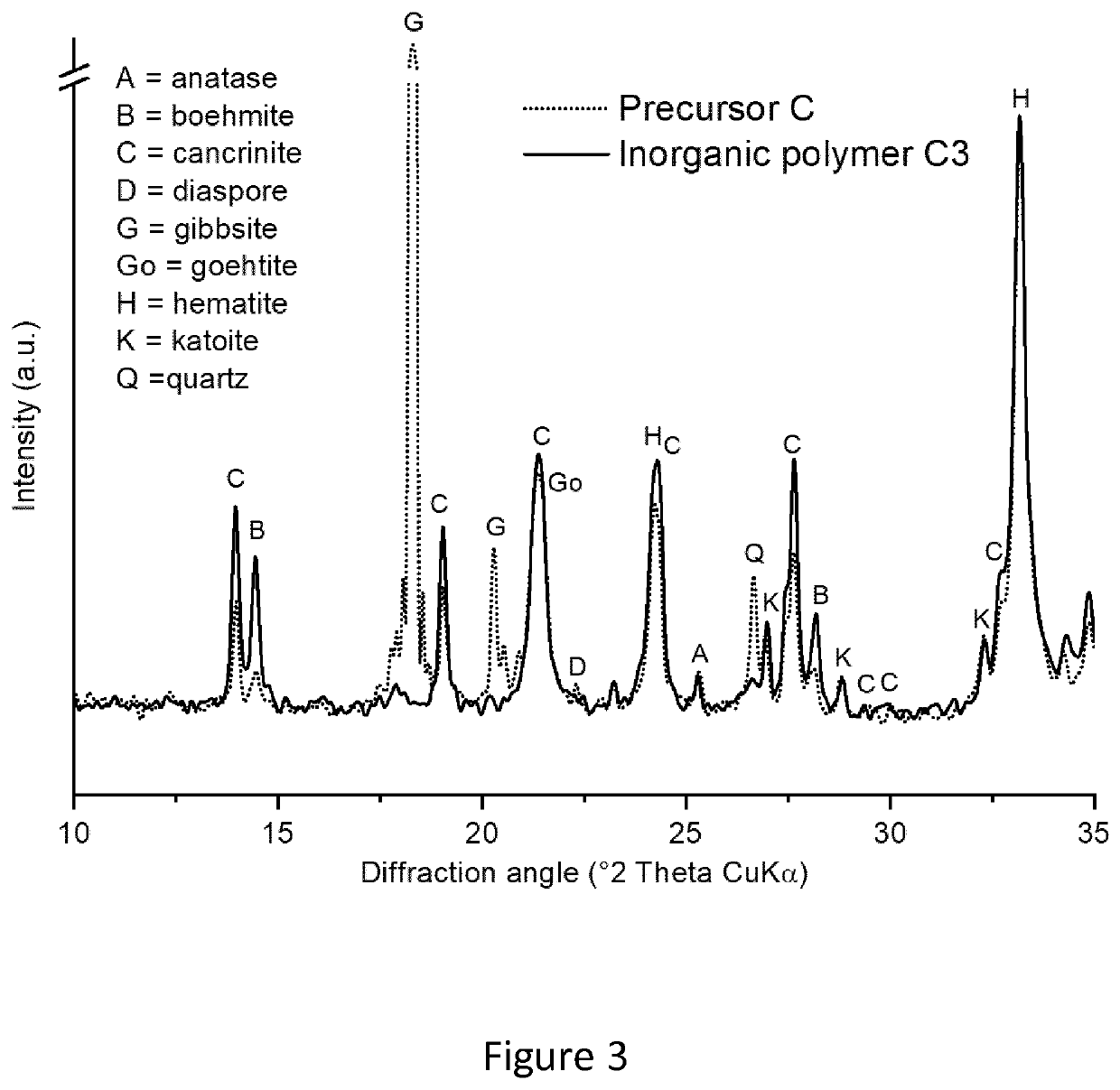Non-fired monoliths
a monolith and non-fired technology, applied in the direction of solid waste management, cement production, sustainable waste treatment, etc., can solve the problems of water insoluble materials and load bearing capacity
- Summary
- Abstract
- Description
- Claims
- Application Information
AI Technical Summary
Benefits of technology
Problems solved by technology
Method used
Image
Examples
example 1
tal Methods
[0112]Materials
[0113]One of the raw material used in this study was gibbsitic bauxite. After drying, it was milled in a ball mill (Retsch PM400) in order to pass a 160 μm mesh size.
[0114]Further, gibbsitic BR slurry was used. Before further processing the slurry was vacuum-filtered (under 45 μm) and the obtained cake was dried for 48 h at 105° C. and milled in a disk mill (Fritsch Pulverisette) to break agglomerates.
[0115]Two kinds of clays, an industrial clay and a natural kaolin, originated from a deposit in south-west England were used in this study. Both clays were dried for 48 h at 105° C. The industrial clay was milled below <160 μm using a vibratory disk mill (Retsch RS200).
example 2
ization of Raw Materials
[0116]The chemical composition of above-mentioned raw materials was measured using an automatic PW 2400 sequential wavelength-dispersive XRF spectrometer (Phillips) and analyzed with the software Uniquant 5 (Omega Data Systems BV). X-ray diffractograms were recorded in order to determine the mineralogical composition using a D2 Phaser (Bruker AXS) and the software DiffracPlus EVA in combination with data of the ICCD-PDF-2 database. Thermogravimetric Analysis, TGA (measurement of weight change) was carried out up to 1000° C. using a SDT Q600 (TA Instruments) in order to determine the loss on ignition.
example 3
on of Solid Precursor Mixes and Na-Based Activation Solutions
[0117]Five different mixes were prepared comprising different fractions of gibbsitic bauxite, gibbsitic BR, the industrial clay and kaolin (Table 1).
TABLE 1Mix compositions tested.MixABCDEgibbsitic bauxitewt %100—10——gibbsitic BRwt %—100909090industrial claywt %———10—Kaolinwt %————10
[0118]Samples were mixed in ethanol using a Turbula Shaker (WAB, Switzerland). Before further processing, ethanol was removed by vacuum evaporation.
[0119]Two different types of activator were prepared to investigate the potential influence on the characteristics of the later products. Alkaline solution I was prepared by mixing 70 wt % sodium silicate solution (m SiO2 / Na2O=3.3, 65% H2O) and 30 wt % NaOH (16 M). The total ratio of SiO2 / Na2O=1.4 and H2O / Na2O=13.
[0120]Solution II was prepared by blending 70 wt % sodium silicate solution (m SiO2 / Na2O=3.3, 65% H2O) with 30 wt % NaOH (8 M) resulting in ratios of SiO2 / Na2O=1.8 and H2O / Na2O=18.4.
PUM
| Property | Measurement | Unit |
|---|---|---|
| pressure | aaaaa | aaaaa |
| pressure | aaaaa | aaaaa |
| temperature | aaaaa | aaaaa |
Abstract
Description
Claims
Application Information
 Login to View More
Login to View More - R&D
- Intellectual Property
- Life Sciences
- Materials
- Tech Scout
- Unparalleled Data Quality
- Higher Quality Content
- 60% Fewer Hallucinations
Browse by: Latest US Patents, China's latest patents, Technical Efficacy Thesaurus, Application Domain, Technology Topic, Popular Technical Reports.
© 2025 PatSnap. All rights reserved.Legal|Privacy policy|Modern Slavery Act Transparency Statement|Sitemap|About US| Contact US: help@patsnap.com



